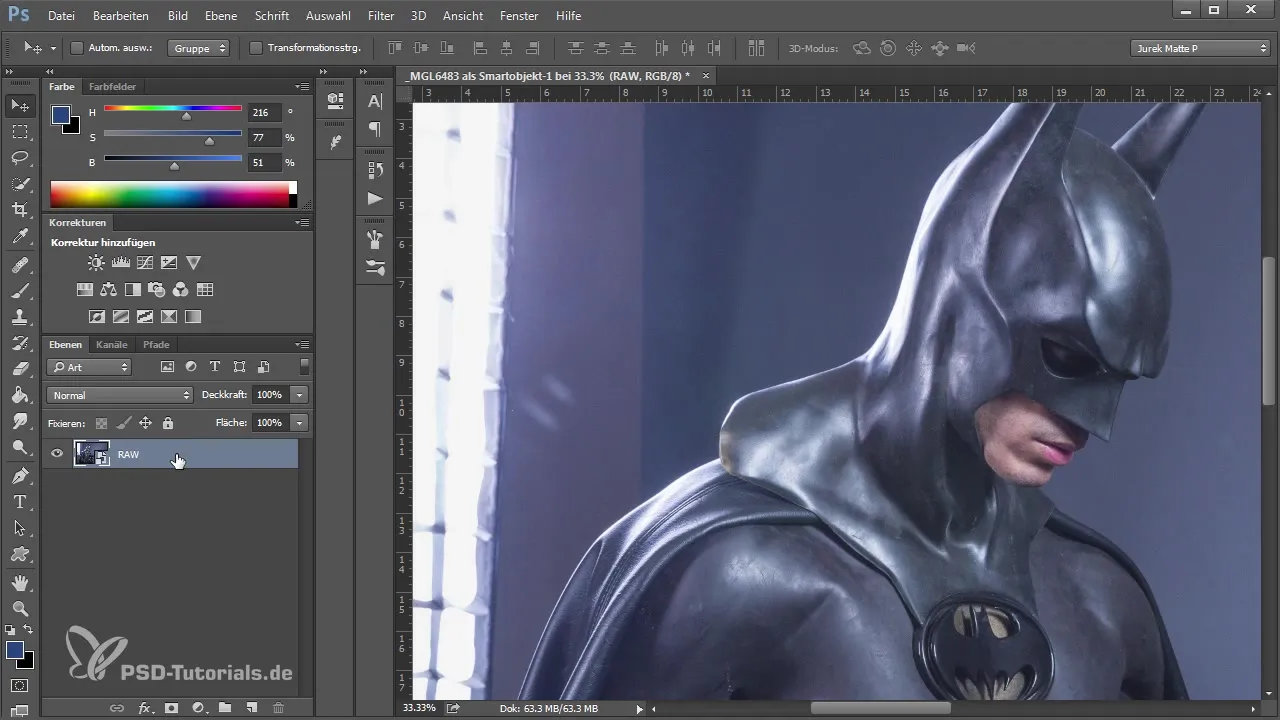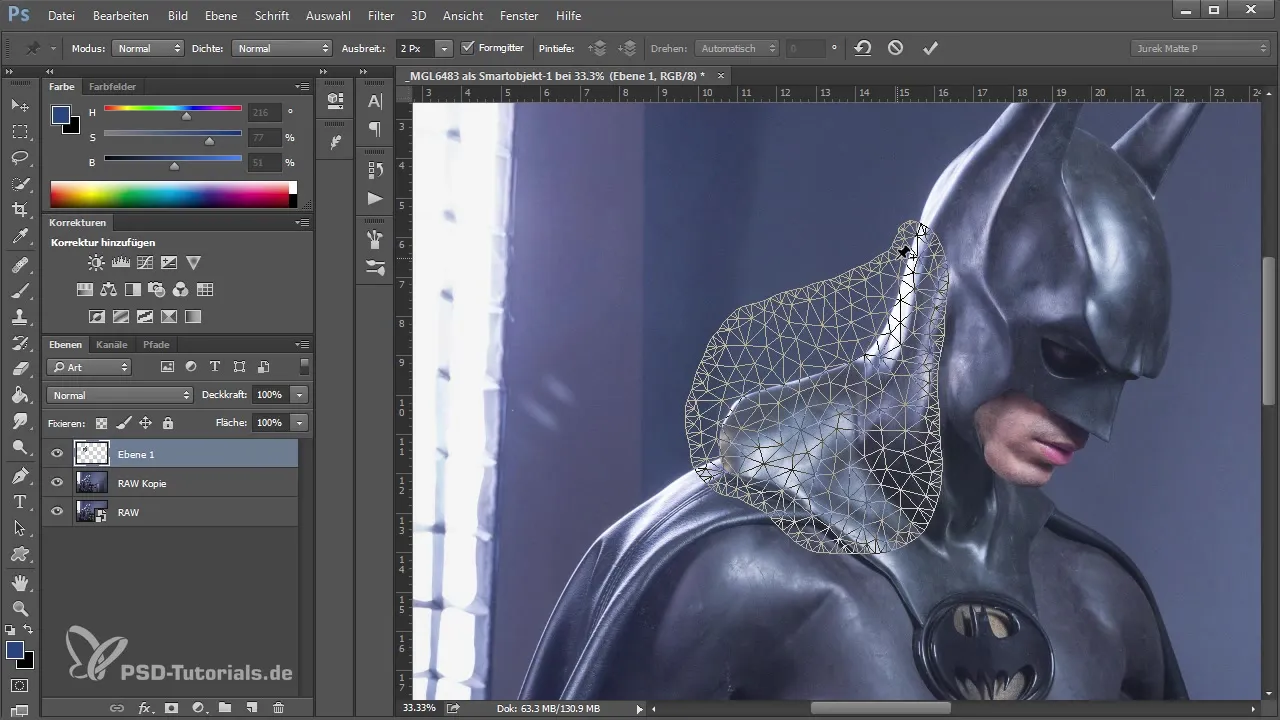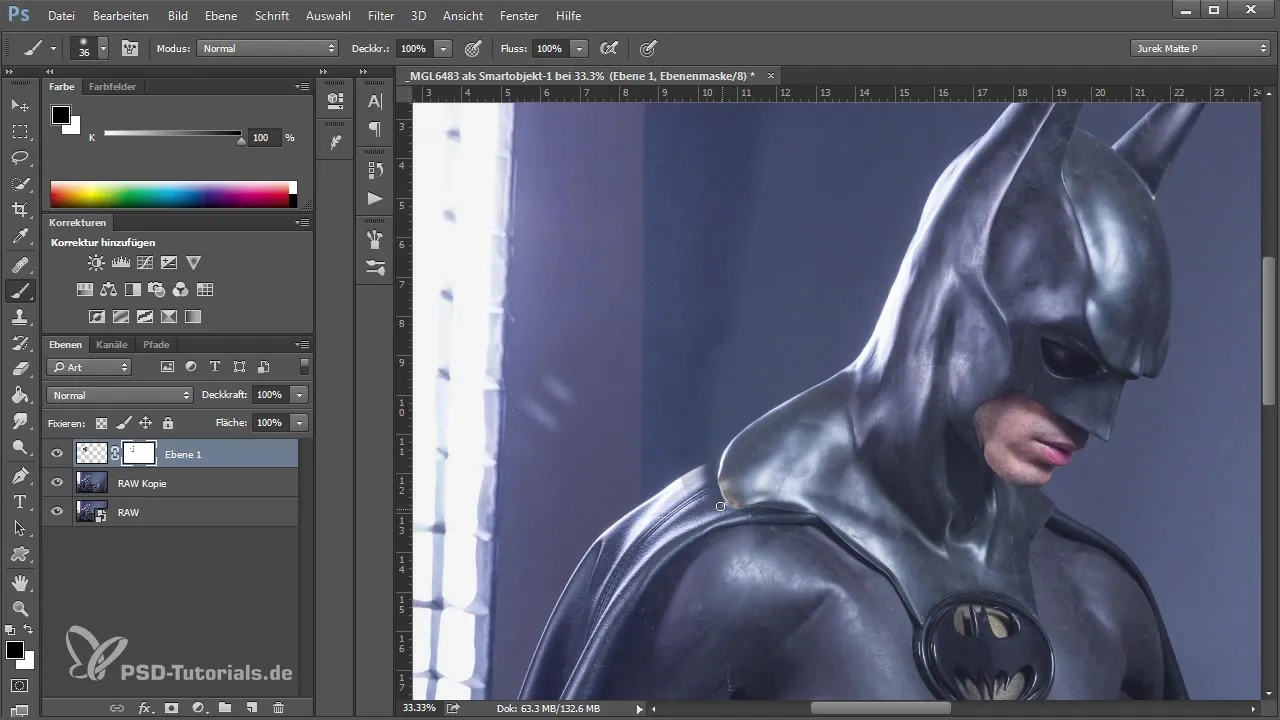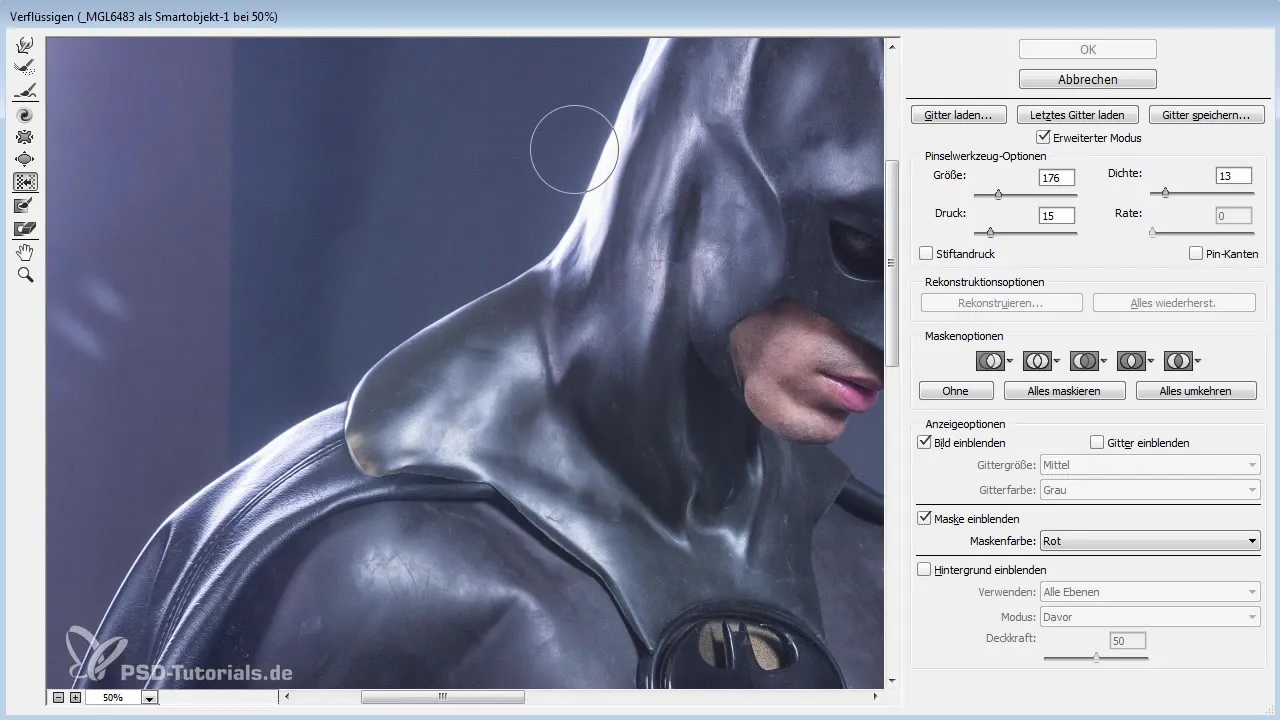In the digital image editing process, errors and small irregularities are common companions. These can range from the pose of a model to inaccuracies in clothing details. Correcting these small flaws often requires not only a good dose of patience but also the right techniques and tools. In this tutorial, I will show you how to use Adobe Photoshop to address errors and how to correct them effectively.
Key insights
- Errors in the image can be compensated for by targeted editing.
- The use of tools like the lasso tool and the warp tool is effective for precise corrections.
- Layer masks allow you to create smooth transitions and avoid hard edges.
Step 1: Analyze the Image
Before you start editing, take a close look at the image. Pay attention to details that may not fit optimally, such as the collar of a garment. The analysis is about identifying areas that need correction to achieve a harmonious overall result.

Step 2: Duplicate the Layer
To create a secure foundation for your edits, it is important to duplicate the working file. By using the combination “Ctrl + J” (Windows) or “Cmd + J” (Mac), you can duplicate the current layer. This ensures that you can always revert to the original layer if unexpected results occur.

Step 3: Selection with the Lasso Tool
Now you should use the lasso tool to roughly select the area you want to correct. This selection can be imprecise; it is only meant to keep the parts of the image that should remain perfect. It is important to have enough selection so that you can later create smooth transitions.
Step 4: Use the Warp Tool
With the selection you just created, go to “Edit” and select “Warp.” With the warp tool, you can adjust the contours of your image. Place pins at points that you do not want to move, and carefully nudge the parts of the collar down. Be sure to make the adjustments gently to avoid distorting the proportions.

Step 5: Optimize Transitions
After making the corrections, it’s time to edit the transitions with a layer mask. Select the layer mask and use a soft brush to mask out unwanted edges. With black color, you can hide areas, while you can reveal made adjustments with white color.
Step 6: Fine-Tuning
Once the rough corrections are complete, zoom in to check the details. Make small further adjustments as necessary, and remove any remaining edges or irregularities. Being particularly attentive here leads to a more beautiful, realistic result.

Step 7: Merge Layers
If you are satisfied with the result, you can merge the edited layer with the one beneath it. Right-click on the top layer and select “Merge Layers.” This way, you have consolidated the corrections into a single, stable layer.

Step 8: Final Color Corrections
Now you can use the “Liquify” filter to make final adjustments to eliminate color errors or irregularities. Use the tools to finely adjust small areas that may still need tweaks. Make sure the changes remain subtle to avoid an over-edited appearance.

Step 9: Review and Final Adjustments
Finally, you should compare your edited image with the original image. Check if the corrections meet your expectations and if the image now appears more harmonious.
Summary
In this comprehensive tutorial, you learned how to identify and effectively correct specific errors in images with Adobe Photoshop. The combination of selection tools, warp tools, and layer masks allows you to optimize images while maintaining high image quality.
Frequently Asked Questions
How can I identify errors in images?Check for details such as poses, facial expressions, and disturbances in clothing.
What is the lasso tool?A tool in Photoshop for selecting areas of an image that allows for a rough selection.
How do I achieve soft transitions in corrections?Use layer masks and a soft brush to create smooth transitions.
Which tools are best for image correction?The lasso tool, warp tool, and layer masks are very effective.
Can I undo changes?Yes, you should always work with duplicated layers to preserve the original.


